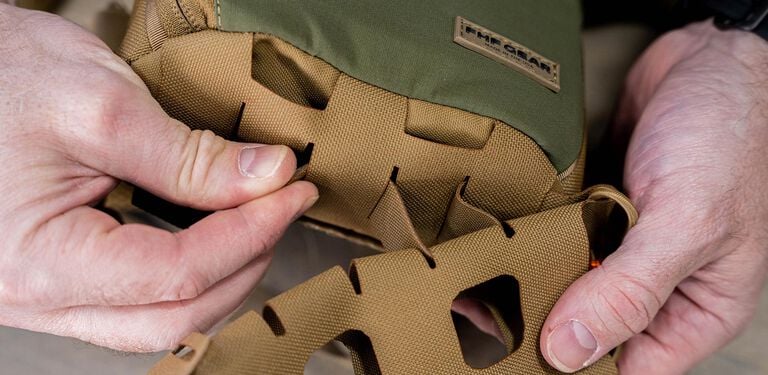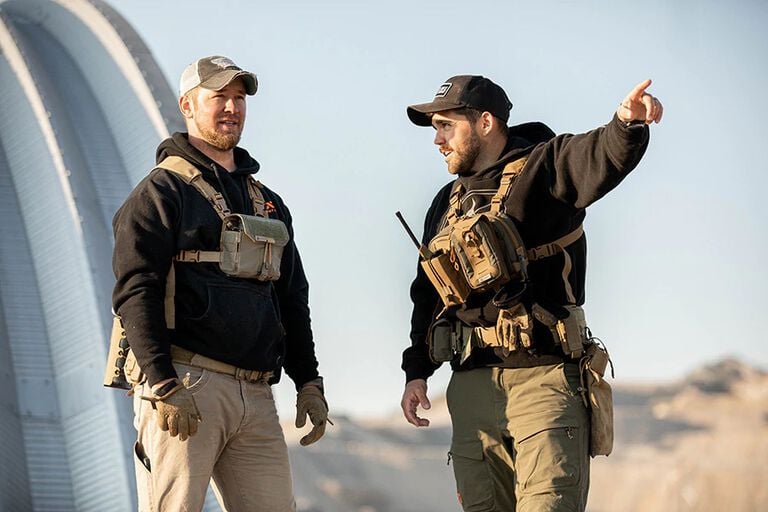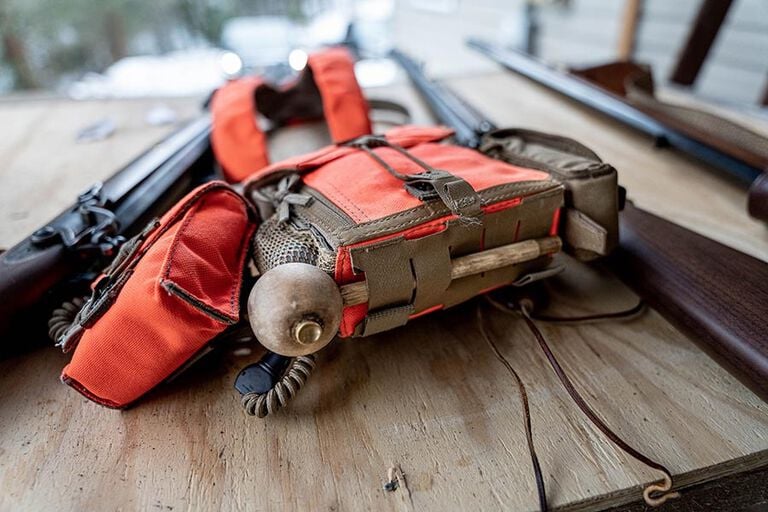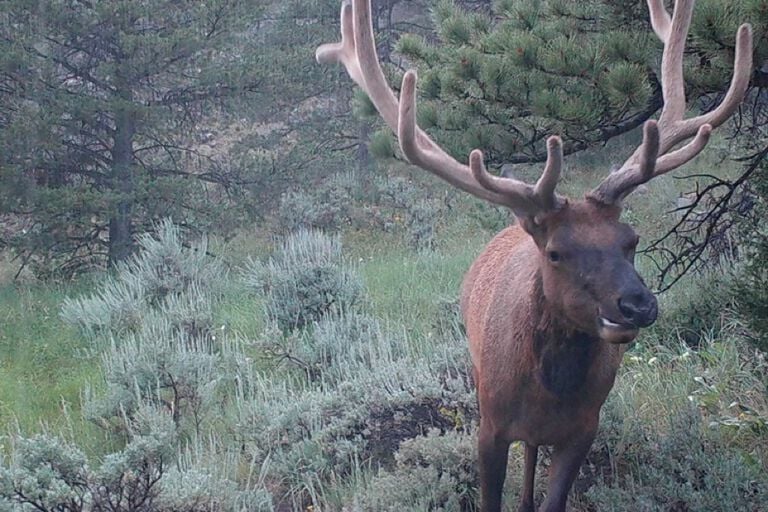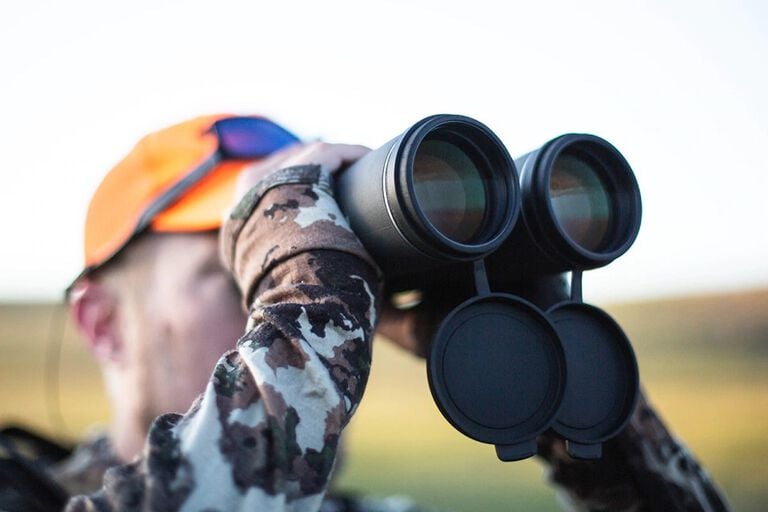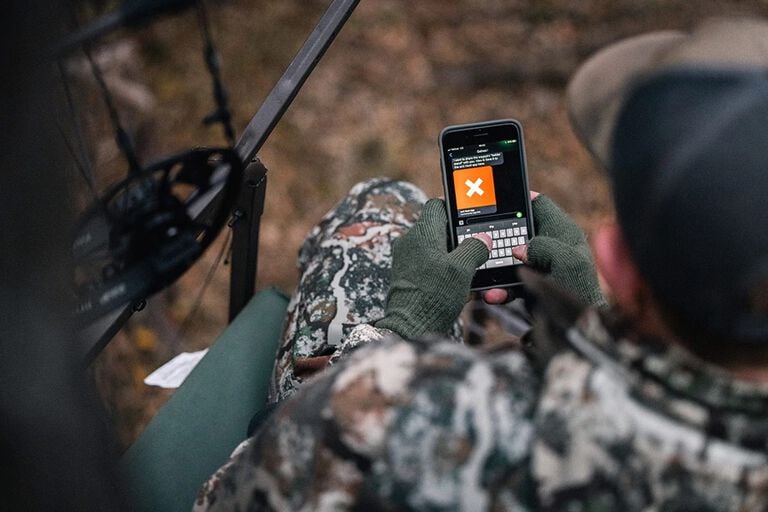DO BULL ELK FORM FIGHT CLUBS?



CRAIG JOURDONNAIS
BIG GAME RESEARCHER // MPG RANCH, MISSOULA, MT
The oval shaped pathway worn into the dusky brown mineral soil wreaked of elk urine, hunter’s perfume. The heavily used trail system snaked through the carpet of pine grass and mature fir trees as if an army of barrel racers practiced their craft in the middle of Nowhere, Montana. This trail had no visible entrance or exit. What the heck goes on here?
Four years ago, I stumbled upon this mystifying track while conducting field work for the North Sapphire Elk Research Project south of Missoula, MT. I invaded the site with a single trail camera spying on the main portion of the path in hopes of solving the mystery. The camera marinated for two weeks. The video captured by the trail camera blew my mind. I’ve studied elk as a professional biologist for over 30 years. I hadn’t observed intense behavior like this at what appeared to be a dedicated “workout center.” This window into bull elk behavior was a gold mine. Elk being elk, I’m certain other ‘Elktagons’ exist. I’ve yet to speak with anyone, layman or biologist, who has observed this type of behavior at a dedicated site. I hope this blog helps uncover other Elktagons around the west.
Bull elk gathered at this site almost daily to chase, spar and generally behave like bull elk. Some of the sparring and chase events included up to 9 bulls. Some of these bouts lasted over 20 minutes and didn’t conclude until their tongues were literally hanging out, flanks heaving as their lungs tried to recover from oxygen debt.
Most of us have observed bull elk fighting and sparring but the intensity of the activity and the heavily worn trail system suggested this site was something unique. It was a gathering place for bull elk to practice battle fundamentals, familiarize themselves with potential opposition and build a pathway toward dominance. As the trail camera captured more video clips, it became apparent that to bull elk, this one-acre parcel was hallowed ground.
Welcome to the Elktagon.
Breeding success is the most important contribution a bull elk makes to herd health. Research findings tell us that body and antler mass are the most influential characteristics that determine a bull’s breeding success. However, a bull doesn’t become dominant simply because he’s genetically and nutritionally blessed for growing large antlers. He must acquire harem defense and fighting skills, but how?
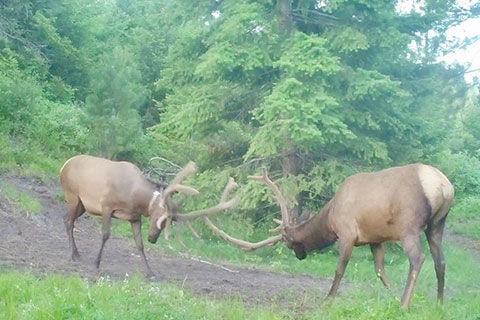
I’ll present a case that this elk urine-soaked acre serves as a critical link toward development of these life skills, a training ground that prepares bulls for winning future battles during the rut. I contend future dominant bulls develop and enhance vital agility and fighting strategies through sparring and chasing one another at a dedicated site. I base my case upon thousands of remote observations of bull elk behavior at a single location in western Montana from mid-May to early September over the last 4 years.
One of the fascinating behaviors documented at the Elktagon is pseudo-sparring. A term I coined to reference sparring-type behaviors of bull elk sporting velveted antlers. Most of the bulls 2 years old and older showing up at the Elktagon in mid-May already have new antler growth. Many of them sport brow-tines. Interestingly, the pseudo-sparring occurs even with this minimal antler growth. There’s no intentional contact with antlers but the body motions related to sparring occur. For example, two bulls will square off, head down, dancing side to side and alternating head on rushes at each other. Usually this includes twisting and turning their heads as if they are locking antlers. They seem to emphasize footwork and rushing one another.
Is there an internal doctrine within the bull elk world where they honor velveted antlers by avoiding contact? Perhaps.
Research papers on bull elk behavior seldom reference sparring behavior while bulls are in velvet. The care bulls employ avoiding contact with one another while in velvet and the acknowledgement of a bull without velvet not contacting an opposing bull still in velvet speaks to the sensitivity of actively growing antlers.
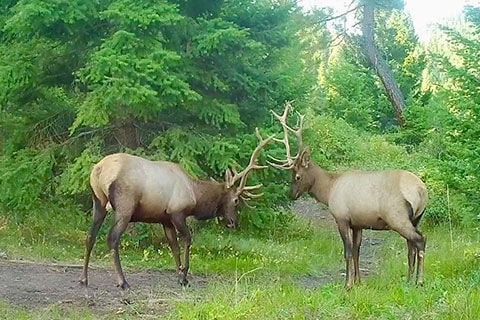
Pseudo-sparring involves all the motions and movements of actual sparring with one exception, bulls don’t engage or contact an opponent’s antlers. Interestingly, even if one of the sparring bulls has shed his velvet and his opponent’s antlers retain velvet, they don’t contact their antlers. However, if the velveted bull begins to lose his velvet in the next day or two, it’s game on, full contact.
Another common behavior bulls practice during these bouts is the breakaway. While engaged in the footwork of pseudo-sparring, a bull will practice spinning away from his opponent and fleeing a short distance. The opposing bull often pursues the fleeing bull. Why is perfecting the breakaway important?
All out fighting occurs during the rut. Fights are serious enough that bulls become injured or die from being gored. Research on rut caused mortality in bull elk document a range of 10-30% annual mortality of bulls from fight induced wounds.
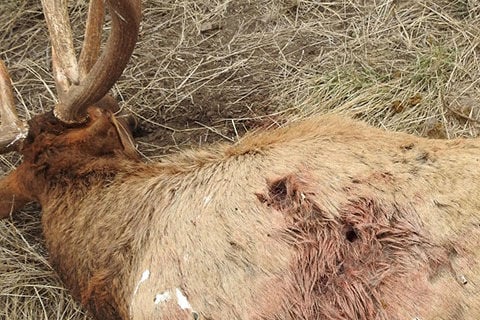
One of the most common ways a bull gets into trouble is when they don’t break clean from their opponent. They stumble or get caught broadside by the opposing bull. Often this results in the compromised bull being driven off his feet and onto his side. Being knocked onto a flank is a critically vulnerable position for a warring bull, skyrocketing his chances of being impaled by his opponent’s tines. Much of the playful pseudo-sparring workouts include perfecting the clean breakaway.
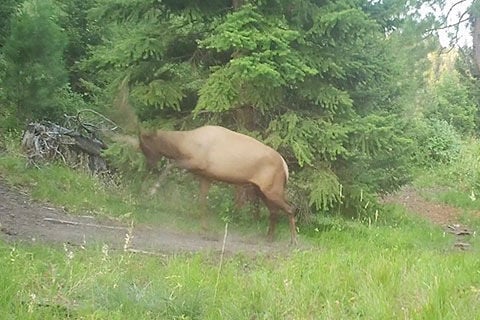
The Elktagon is located on summer range. Some bulls visit from mid-May through early September. Others chase and pseudo-spar for short periods as they migrate toward final summer destinations. Or I’ll observe them in late summer and early fall as they shed their velvet and begin feeling the magnetism of cow/calf groups.
What about the ladies and kids? Antlerless elk appear in less than 1% of the over 2,300 video clips of elk. The Elktagon has a definite ‘sports bar’ feel to it.
Unique features to antlers become apparent while observing this many bull elk. Accidents cause injuries to antlers. I’ve observed bulls with bleeding and damaged antlers. The cause of these injuries never appeared on camera. Did they hit the velveted antler on a branch while evading a predator or misjudge and strike an opposing bull during a pseudo-sparring match? It’s impossible to know exactly the source of damage. The point of impact on developing antlers often causes abnormal growth patterns. For example, a main beam damaged a foot above the pedicle redirects growth at a 90-degree angle or a deformed pedicle causes an antler to grow parallel to the facial profile of a bull. Abnormal growth isn’t just from accidents.
Genetic abnormalities create uncommon growth patterns in velveted antlers too. Detecting the source of abnormalities in developing antlers, genetic vs accidental, isn’t always straightforward. Regardless, the growth response to either source of deformation is often unique and bizarre.
Does one acre matter in the life of a bull elk? It certainly appears so. While documenting bull behavior at the Elktagon occurred for only 4 years, I think locations like the Elktagon play key roles in preparing bulls for dominance and breeding success. Hopefully, in time, I can begin to link a bull’s behavior at the Elktagon with his breeding success during the rut.
Perhaps those bulls showing up to shadow box are rewarded for their commitment and determination. Maybe it’s their way of trying to overcome a lack of antler or body mass. Technique vs brute strength, hard-wired vs contrarian? Cool to think about.





